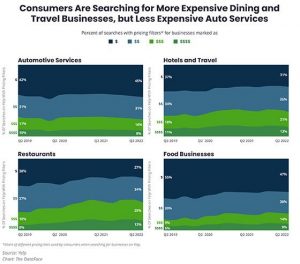A practical technique to build collaborative team processes on a foundation of customer-centricity.
For a long time, we’ve taken a very task-centric approach to marketing. While having each owner write out their own task is quick and easy, and oftentimes a good way to work, writing work in a story format may be better for instilling the value of team collaboration.
The story approach has been long used by agile software teams, and you may be familiar with the term “user stories.” User stories were created to get rid of heavy documentation and to spur a conversation with the team.
While user stories were meant for software developers to see how people used their systems, it’s a technique that works well for marketers too — with a few minor tweaks. Instead of “users” of a system, we want to think about what our customers want, so I like to call them “customer stories.”
A customer story is really all about the work the team is going to do, but gives everyone a more well-rounded perspective and is inclusive of all work needed by the team to create value to the customer.
What goes into a customer story
A customer story answers the questions of who, what and why. When everyone on the team is clear on who the target audience is for the marketing, what work we’re doing, and why it benefits the customer, we can have a better shared understanding as a team.
Here are a few examples of customer stories:
“As a realtor, I want a landing page where prospects can go so that I can build up my sales pipeline.”
“As a healthcare provider, I want to get a weekly email update on vaccination rates in my community so that I am better prepared for a crisis.”
“As a mom of two, I want a buy one get one free offer on back to school shoes so that I can save money.”
“As a new homeowner, I want to receive a brochure on where to find a qualified pediatrician near me so that my kids are well cared for.”
The biggest benefits of customer stories
I’ve seen teams that take a little extra time to write customer stories benefit from the exercise, but the biggest benefit is to really understand as a team all of the bits and pieces that go into delivering value to a customer — an understanding which tasks alone don’t give us.
When we practice story writing, the team is prompted to think about all of the tasks needed to deliver value. Let’s use this story for example:
“As a mom of two, I want a buy one get one free offer on back to school shoes so that I can save money.”
When the team gets ready to start work, they discuss everything and how they will accomplish the story together. They may decide the work includes:
- Researching competitors’ offers;
- Designing the offer;
- Writing copy;
- Getting legal approval; and
- Peer review.
Now, instead of everyone on the team going off and just thinking about their own piece, they have a really good understanding of what getting the work done and delivered actually looks like — and their goal becomes more about collaborating to finish the project, rather than individually starting their own tasks.
Common pitfalls to avoid with customer stories
A really common mistake I see when marketers begin this practice is making the story way too high level and thinking about it more like a customer journey than what it actually is — deliverable work.
Here’s an example of the earlier story written this way:
“As a mom of two, I want my kids to go back to school in style while still saving money.”
While this is not necessarily wrong from what the perspective of what customer may want, it doesn’t give the team enough context about the actual work. The first story we specifically called out “Buy one get one free offer on back to school shoes”, whereas the second one merely states, “Go back to school in style.”
Another pitfall to avoid is writing the story from the perspective of your internal team. Stories that begin with “As a marketer….” or “As a graphic designer….” are missing the point of looking at work from the customer’s perspective.
Story writing workshops
A good practice is to get the entire team involved with story writing. By holding a story writing workshop, the team can take on more ownership of the work. It’s good practice to do this as part of quarterly planning or at the start of a large new campaign.
The story writing workshop would involve the product owner or the person leading the initiative sharing the goals and outcomes of the campaign. The team would then work together to come up with stories that support the campaign. Begin with using a sticky note tool to brainstorm the tactics such as “webinar” or “social media post.” Using a time box, such as 15 minutes will keep people from over-analyzing the ideas.
Once the timebox expires, remove any duplicates or any ideas that the team agrees aren’t feasible or don’t support the goals of the campaign.
Next, begin the actual writing process. You can do this as one team or break into pairs and then share with the larger team. Let’s take the webinar as an example. Who is the webinar for? If you have personas, it would be the primary persona that this work would impact. What’s the benefit? What does this webinar give this person that they wouldn’t otherwise have?
“As an expectant mom, I want to attend a webinar on breastfeeding so that I know what to expect when the baby arrives.”
The persona is clearly the expectant mom, the team’s deliverable is a webinar and the benefit to the customer is knowing what to expect when the baby arrives.
While you don’t have to write customer stories to be a great agile marketing team, this simple technique may lead to better shared understanding within the team and give everyone a better perspective on why this work is being done, who it’s for and how it is a benefit to the customer.
The post Writing customer stories to improve team collaboration appeared first on MarTech.
MarTech(42)
Report Post








